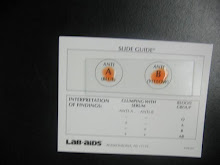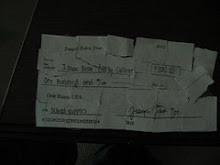Fingerprinting Analysis
Fingerprinting has been used all over the world including its original founding country Nova Scotia. The observation that no two finger print was alike was observed in 14th century Persia on a stack of government documents. Two professors named Marcello Malphigi and John Evangelist Perkinji both made good observations in fingerprinting like noticing “ridges, spirals, and loops” and also John noticed 9 different fingerprint patterns. July 1858 is when the English first started using fingerprints because of Sir William Herschel. This Chief Magistrate of the Hooghly district in Jungipoor, India was the first to use fingerprints on native contracts. This caught on! The discovery of using fingerprints for identification and the methods of classification all came in 1880. Dr. Henry Faulds, a British Surgeon-Superintendant of Tsukiji Hospital in Tokyo took up a study of “skin furrows”. Sir Charles Darwin was forwarded a message from Henry about his classification system and a sample of forms for inked impressions. This was of no assistance though. Not only did he tell it to Darwin, but had a published article in the Scientific Journal called “Nature”. Two years later, fingerprints were used on a document to prevent forgery by Gilbert Thompson which is the first known use of fingerprinting. A year after this incident, Mark Twain published a book called “Life on the Mississippi”. This book had a murderer who was identified by fingerprinting thus giving us the idea. The 1880’s brought many discoveries in forensics and even more came with Sir Frances Galton in 1888. Frances is a cousin of Darwin and a British anthropologist who decided to observe fingerprints used for identification. His book “Fingerprints” used “the first classification system for fingerprints”. His main interest was determining hereditary background by using fingerprints in which he identified the characteristics. That’s why we call these identifications as “Galton’s Details”. Based on his pattern types, an Argentine Police Official named Juan Vucetich started fingerprint files at the station in 1891. He also made the first fingerprint identification for a criminal a year later. The Henry Classification System was named this because of Sir Edward Richard Henry who revised Galton’s observations which introduced fingerprinting to England and Wales in 1901. Dr. Henry P. DeForrest was the person in 1902 to pioneer the systematic use of fingerprints in New York and then New York State Prison started using fingerprints for criminals in 1903. Years passed with uses of fingerprints spreading from different prisons and even to the U.S. Army. To this day fingerprints have played an important role in identifying people all over the world!
Citation:
"Fingerprinting History." Aladdin USA. Aladdin USA Corporation, 1997. Web. 24 Aug.2009.
Handwriting Analysis
Aristotle noticed two thousand years ago the equivalence between handwriting and personlaty along with Chinese making observations on the link between "characters" and writing. A published book in 1622 by an Italian physician is what finally analyzed charcter through handwriting studies. The name for this analysis is called graphology which was named by the headmaster of a Paris school named Abbe Michon who "respected intellectual" and wrote several novels on this. His inheritor, Crepieux Jamin, categorized graphology into a inclusive system. At the same time, the "scope" of graphology was extended because of Dr. Ludwig Klages, another philosopher, advanced theories of rhythm and "form level" with the gestalt theory in Germany. A Swiss Professor further expanded the horizons of graphology with his lectures at the University of Zurich and used psychoanalysis to understand graphology. Ania Telliard followed up on his work and applied the typological theories from working with C.J. Jung for 20 years to graphology. Alfred Binet, the inventor of I.Q. Testing, is a substantial believer in handwriting analysis. He ratified that character traits can be reflected through handwriting. Clinical and emprical procedures have proven handwriting analysis as an efective tool for people world-wide.
Cite:
"A brief history and background of handwriting analysis or graphology." Handwriting Analysis. Learn to analyze handwriting at Graphic Insight. Web. 07 Sept. 2009.
Hair Analysis
The late 1800s is when hair analysis was used as trace evidence in criminal investigations recognizing it as an improtant aspect of a mystery! An example of hairs found at a crime scene is in 1847 in paris with the murder of Duchesse de Praeslin. A chapter for using hair in criminal investigations was used in a novel by Alfred Swaine Taylor and Thomas Stevenson called "The Principle and Practice of Medical Jurisprudence" in 1883 which is knows as a "classic text" on forensic science. There are magnified human hair drawings included in the book! It also identifies human hair parts. England using hair as evidence is also another thing included in the great book. French forensic scientists Victor Balthazard and Marcelle Lambert published a novel called "Le Poil de l'Homme et des Animaux" ("The Hair of Man and Animals") which is a comprehensive study of hair in 1910. Most animals were included in the text about "numerous microscopic studies". Dr. Sydney Smith, in 1934, used the comparison microscope to perform an analysis side-by-side with hairs from a suspect at a crime scene. An 8-year-old girls murder was solved because of this technique! Chemical methods is what further advances in hair analysis has created through the 20th century to compare hairs. As of today, hair analysis has branched with neutron activation analysis, DNA fingerprinting, and trace eveidence anaylsis of course as a standard tool.
Cite:
"Forensic Science: Fundamentals and ... -." Google Books. Web. 07 Sept. 2009.
The Wayne Williams Case
With Fiber Analysis History
In 1979 to 1980, the murder of 12 African American males was investigated involving fiber evidence; this was a very popular case. The Williams case involves many controversial matters for forensic science still in the 21st century. This court case was called Williams v. State, and in this, the defented was charged with 2/12 murders. The centrality of fiber analysis through literature in this investigation meant "a detailed recitation" of the facts in proving this person as guilty in which they did.
Dye content from fibers, carpet fibers, and everything has been used in investigations. The ones used in the case for Williams were from: a station wagon, throw rug, and blue rayon fibers.
Cite:
"Criminal investigation -." Google Books. Web. 07 Sept. 2009.
Saturday, September 5, 2009
History of Fingerprinting, Handwriting, Hair, and Fiber Analysis
Posted by Amanda Purkaple at 6:17 AM
Subscribe to:
Post Comments (Atom)




0 comments:
Post a Comment